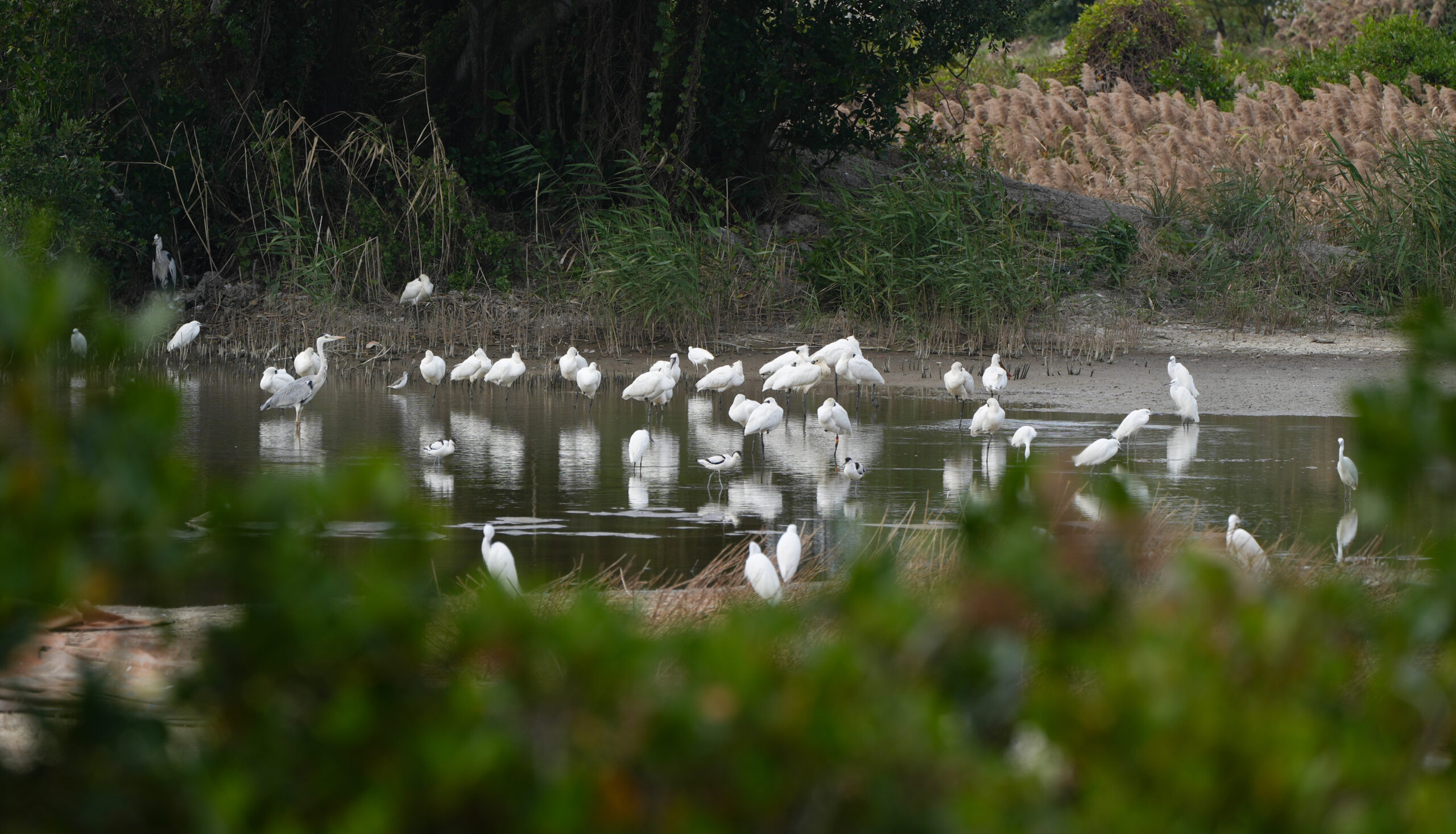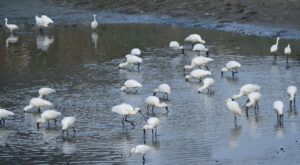
© Jay Kong/HKBWS
Coordinated by EAAFP Partner, The Hong Kong Bird Watching Society (HKBWS), the International Black-faced Spoonbill Census 2023 was conducted from 6th to 8th January 2023. Global population of Black-faced Spoonbills (BFSs) reaches another record high of 6,603, a rise of 7.2% (i.e. 441 individuals) from last year. However, 299 individuals were recorded in the Deep Bay area across Hong Kong and Shenzhen, which is 70 individuals less compared to last year. The number shows a decline of 11% and 19% from 2021 and 2022 respectively.
Steady growth in Taiwan, Mainland China and Korea while moderate decline in Japan and almost 20% drop in Deep Bay
The census covered about 130 sites all over the world. Taiwan, Mainland China and the Republic of Korea are the major regions which attribute to the growth in the overall population. Taiwan remains the largest congregation site with 4,228 individuals comprising 64% of the global population. The year-on-year growth is 10.6%. In Mainland China, 1,307 individuals and 15.1% year-on-year growth were recorded. The number comprised 20% of the global population. In Ro Korea, the number of BFS reaches 54 individuals with an increase of 45.9%, i.e. 17 individuals. Contrarily, in Japan 610 individuals are recorded which shows a decline of 10.7% from last year, i.e. 73 individuals less.
The results this year shows that the global population of Black-faced Spoonbills has increased steadily. The numbers in Taiwan and Mainland China have been setting new records in recent years, which suggests the conditions in those habitats are favourable for a larger number of Black-faced Spoonbills to stay or to gather. Favourable conditions may refer to a safe environment, and sufficient food sources in nearby feeding grounds. The decline in Japan might be related to the loss of stopover sites and the outbreak of bird flu, according to local experts.
In Deep Bay area, 299 individuals were recorded, which is the second lowest record in the last decade. Compared to last year, there were 70 individuals les, that is 19% decline. Having reached its record high of 462 individual in 2010, the number of BFS in Deep Bay has not advanced since then and remained above 300 from 2016 until it dropped to 299 this year. The result this year is worrying.

Fig. 1 Black-faced Spoonbill Census results 1989-2023 © HKBWS
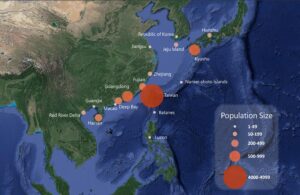
Fig. 2 Black-faced Spoonbill Population size and distribution © HKBWS
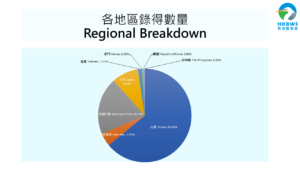
Fig. 3 Black-faced Spoonbill Census results regional breakdown 1989-2023 © HKBWS
The problem of habitat degradation must be confronted, and conservation should be prioritized in the Northern Metropolis Development Strategy
The decline in the number of Black-faced spoonbills in Deep Bay area is alarming to Hong Kong. Black-faced Spoonbills mainly forage in the intertidal mudflats of Deep Bay, shallow waters in Gei Wai, and drained fishponds. As the Ramsar Wetland in Mai Po Inner Deep Bay is relatively adequately protected by law, these habitats can be maintained in relatively good conditions. However, the habitats outside the nature reserve are facing different threats. Without immediate measures, they may become unsuitable for Black-faced Spoonbills to loaf and feed.
For instance, the expansion of mangroves, including the invasive species Sonneratia caseolaris, continues to eat up the mudflats resulting in a reduction in the habitat available to Black-faced Spoonbills. On the other hand, nearly 30% of the fishpond wetlands and the buffer zones in Deep Bay are hoarded by real estate developers or held privately. These lands have been abandoned or the land use has been altered, which continuously causes habitat degradation in the Deep Bay area. If proactive conservation and management actions are not taken immediately, there is a risk for losing these important winter habitats of the Black-faced Spoonbills’.
In order to protect the Black-faced Spoonbill, many countries and cities put great effort into different conservation actions in the past 30 years, and finally the decline of the species is successfully reversed. "It is especially important to establish comprehensive protection laws, long-term conservation strategies and good land use planning, which can restore endangered species and even biodiversity around the world." Mr. Yu Yat-tung, Director of The Hong Kong Bird Watching Society, continued, "The future of the Deep Bay wetlands is determined by the conservation and planning of the Northern Metropolis Development Strategy. To protect the ecological integrity of this internationally important wetland, the Northern Metropolis must comply with the guidelines to protect "Wetland Conservation Area" and "Wetland Buffer Area". The wetland conservation park system must fully cover the "Inner Deep Bay and Shenzhen River catchment area" Important Bird Area recognized by BirdLife International, and ensure them to be protected by stricter laws and regulations; also a management model that is people and ecology oriented must be applied.”
Hong Kong is responsible for the proper protection of wetlands and biodiversity, the maintenance of the important ecological corridors for migratory birds, and the assistance to China in fulfilling its obligations under the “Convention on Biological Diversity” and the “Convention on Wetlands”. The Hong Kong Bird Watching Society hopes that the Northern Metropolis can practice "ecological priority", through proper management and conservation of the Deep Bay wetlands, turn crisis into opportunity, and maximize the benefits of bird conservation.
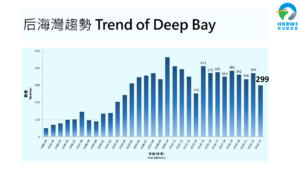
Fig. 4 Trend of Black-faced Spoonbill population in Deep Bay © HKBWS
About The International Black-faced Spoonbill Census
Black-faced Spoonbill is listed as "Endangered" on the International Union for Conservation of Nature's (IUCN) Red List of Threatened Species. The International Black-faced Spoonbill Census takes place every January ever since it was first launched in 1994. During Census 2023, more than 200 veteran birdwatchers, conservationists, researchers and ornithologists were mobilized to record the number of wintering Black-faced Spoonbills at about 130 sites.
- Reposting of news article from Hong Kong Bird Watching Society with permission, original article (link).
- Learn about EAAFP Black-faced Spoonbill Working Group: https://www.eaaflyway.net/black-faced-spoonbill-working-group/

